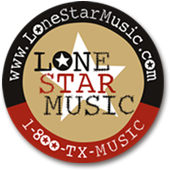DESCRIPTION
Dallas State Fair
3921 Martin Luther King Blvd.
Dallas,Tx 75210
214.565.9931
This Venue is a Favorite of
0 members
The Dallas State Fair & Exposition, to which the present State Fair of Texas traces its origin, was chartered as a private corporation on January 30, 1886, by a group of Dallas businessmen including W.H. Gaston, John S. Armstrong and Thomas L. Marsalis. James B. Simpson was elected president of the association, and Sidney Smith was appointed as the first secretary.
Differences arose among the directors over where to build the new fairgrounds. Gaston proposed property in East Dallas, an 80-acre tract located within the modern boundaries of Fair Park. Strong opposition was voiced by C.A. Keating, speaking for the farm implement dealers. When no compromise could be reached, Keating and his supporters secured a charter for a separate event, the Texas State Fair & Exposition, which they announced would open just north of town on October 25 � one day ahead of the Dallas State Fair.
Exhibit facilities and a racetrack were built at each location, and both events attracted sizable crowds that fall. Attendance at the Dallas State Fair was estimated in excess of 100,000. But revenues for the fairs failed to meet expenses. The rival associations merged in 1887 becoming the Texas State Fair & Dallas Exposition. Despite indebtedness of more than $100,000, the directors voted to expand the fairgrounds by purchasing 37 acres adjacent to the East Dallas site.
The finest racing stock, cattle sales, concerts, balloon ascents, displays of farm machinery, contests for the ladies and appearances by such notables as John Philip Sousa, William Jennings Bryan, Carrie Nation and Booker T. Washington brought thousands of Texans to the Fair each year. But the popular success of the exposition was shadowed by repeated fires, mishaps and mounting debt. A grandstand collapsed during a fireworks show in 1900, and the main exhibit building burned to the ground two years later. When the Texas Legislature banned gambling on horse races in 1903, thereby eliminating the Fair's main source of income, the association faced a financial crisis. To protect this valuable community asset, the Texas State Fair spurned offers from developers and sold its property to the City of Dallas in 1904 under an agreement that set aside a period each fall to hold the annual exposition.
The reorganized State Fair of Texas prospered immediately, establishing new records for receipts and attendance as 300,000 people streamed through the gates in 1905. President William Howard Taft visited the Fair in 1909, and Woodrow Wilson delivered a speech in 1911. Automobile races and stunt flying exhibitions became the top attractions. Attendance topped the one million mark in 1916. World War I caused the 1918 State Fair to be canceled, and Fair Park was converted into a temporary army encampment.
The 1920s brought significant development and increased activity to the fairgrounds. A magnificent auditorium � which eventually would be known as the Music Hall � was completed in 1925, and outstanding New York shows were presented to Texas audiences for the first time. The Texas-OU football game was established as an annual fairtime event in 1929. And in 1930, the race track complex was razed to permit construction of 46,000-seat Fair Park Stadium � later renamed the Cotton Bowl.
In 1934, largely through the efforts of civic leader R.L. Thornton, Fair Park was selected as the central exposition site for the proposed Texas Centennial celebration. No state fair was scheduled in 1935, and construction began on a $25 million project that transformed the existing fairgrounds into a masterpiece of art and imagination. The 1936 Texas Centennial Exposition attracted more than six million people during its six-month run. A similar but smaller-scaled event, the Pan American Exposition, was presented in 1937.
No fairs were held from 1942-1945. Following World War II, under the leadership of R.L. Thornton, the State Fair of Texas entered an era of unprecedented growth. Attendance reached the two million visitor level in 1949.
Highlights of the 1950s included the development of an international livestock show, installation of a monorail system, a Cotton Bowl concert by Elvis Presley, a visit from Vice President Richard Nixon and the first appearance of Big Tex, a 52-foot cowboy figure erected in the center of the grounds.
Since 1960, each exposition has been keyed to a theme. In 1968, the total number of fairgoers exceeded three million for the first time. Major renovation of the Cotton Bowl and Music Hall was accomplished during the 12 years that Robert B. Cullum served as State Fair president. Tragic midway accidents in 1979 and 1983 led to the adoption of a ride safety program that is considered a model for the amusement industry. In 1986, Fair Park was designated a National Historic Landmark, and the State Fair of Texas hosted a 31-day exposition celebrating both the Texas Sesquicentennial and the Fair's own 100th anniversary.
As the Fair moved into its second century of operation, new leadership assumed command. In 1988, Errol W. McKoy was named president with responsibility for the organization's daily operation. George A. Shafer was elected chairman of the board of directors in April 2003. The traditional fair season was extended from 17 to 24 days, and corporate sponsorship began to play an increasingly important role in programming. Involvement by such major companies as Chevrolet, TXU, Kroger Food Stores, Miller Brewing Company, Coca Cola and Dr Pepper made it possible for the State Fair of Texas to offer its visitors a range of exhibits, entertainment and services that are unmatched by any annual exposition in North America.
| DATE |
VENUE, CITY, STATE |
ARTIST |
NOTE |
| No Tour Dates Available |

